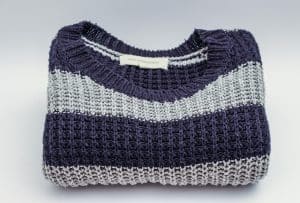Color Theory: Understanding Your Personal Palette
Welcome to the world of color, where every hue, tint, and shade hold a hidden meaning and significance. Most of us are familiar with basic color theory, which explains the relationship between colors and how they interact with each other. However, did you know that colors can also play a significant role in defining our personal style and preferences? Yes, you read it right – your personal palette can say a lot about your personality, emotions, and even your mood. In this article, we will explore the concept of color theory, and more importantly, how it can help you understand your unique personal palette. So, let’s dive in and unlock the secrets behind your favorite colors!
What is Color Theory?
Before we delve into understanding your personal palette, let’s take a quick refresher on color theory. Simply put, color theory is a set of principles and guidelines that explain the relationship between colors and how they work together. These principles are often used in art and design to create visually appealing and harmonious compositions. The primary colors in color theory are red, yellow, and blue, which are combined to create secondary and tertiary colors. From warm to cool tones, color theory helps us understand the science behind the colors we see.
Understanding Your Personal Palette
Each one of us has a unique personal palette, which is a combination of colors that we gravitate towards. These are the colors that make us feel comfortable, confident, and reflect our personal style. Whether it’s the colors we choose to wear, decorate our homes with, or use in our artwork, our personal palette plays a significant role in defining our aesthetic choices.
The Psychology of Colors
Did you know that colors can evoke certain emotions and moods? This phenomenon is known as color psychology, which suggests that different colors have distinct meanings and can impact our thoughts and behaviors. For example, red is associated with passion, energy, and aggression, while blue is linked to calmness, trust, and stability. Understanding the psychology of colors can provide insight into why we are drawn to certain colors and what they say about our personalities.
Discovering Your Color Preferences
One of the easiest ways to identify your personal palette is to look at the colors you are naturally drawn to. Take a look at your wardrobe – do you see a pattern in the colors you wear the most? Pay attention to the colors that make you happy or calm – these are usually your go-to colors. Another way to discover your color preferences is to take a color personality test, which can provide a deeper understanding of your personal palette based on your responses.
Personalizing Your Style
Once you have identified your personal palette, you can use it to your advantage to create a unique and personalized style. For instance, if you are someone who loves warm and earthy tones, you can incorporate these colors into your outfits, accessories, and even your makeup. Experimenting with new colors can also help you step out of your comfort zone and add a fun element to your style.
Incorporating Your Personal Palette in Design
Apart from personal style, understanding your personal palette can also be beneficial in design and branding. As consumers, we are naturally attracted to colors that resonate with us, and that’s why many businesses use color psychology to capture our attention. If you are a business owner, identifying your personal palette can help you create a brand identity that aligns with your personality and values.
Using Color Combinations
Knowing your personal palette can also guide you in choosing color combinations that work well together. For instance, a complementary color scheme, which includes colors opposite to each other on the color wheel, can give a vibrant and eye-catching look. On the other hand, an analogous color scheme, which includes colors next to each other on the color wheel, creates a more harmonious and soothing effect.
In conclusion, color theory goes beyond the basics of primary and secondary colors and can have a significant impact on our personal style and branding. By understanding your personal palette, you can make conscious choices that reflect your preferences, personality, and mood. So, take some time to explore the world of colors and discover what your personal palette says about you!





